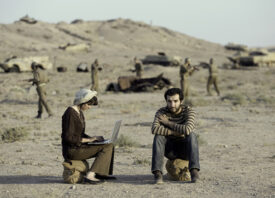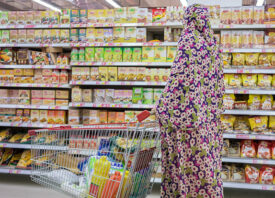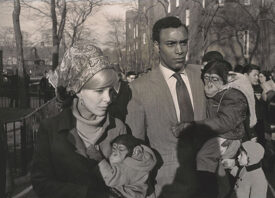Search this site
Inside Iran’s Very Convincing Cinema City
A wax figure of a fallen hero in a museum reconstruction in Iran.
A museum reconstruction of a bombarded and demolished city in Iran
When the powers that be show us images of war, suggests Warsaw-based photographer Wawrzyniec Kolbusz, we accept them at face-value, without questioning their context or implications. With the advent of new technologies and news platforms, it’s become more essential that we as consumers challenge the onslaught of war imagery and media coverage to pull fact from fiction.
With Sacred Defense, Kolbusz evidences this slippery slope between reality and facsimile by documenting the convincing sets built in Iran’s cinema city, where films depicting the Iraq-Iran war are frequently shot, as well as museums and souvenir shops that display and sell war memorabilia.
The photographer, already suspicious of western claims of Iraq’s “weapons of mass destruction” and Iran’s “nuclear weapons programs,” stumbled upon cinema city, located close to Tehran, whilst studying the extensive history of film in Iran. When researching the period between the 1980s and 1990s, around the time when the war took the lives of almost one million people, he discovered the array of permanent sets constructed for the single purpose of staging war movies. The idea of such a place shocked Kolbusz, who understood that for Iran, the eight-year war had been as damaging as World War II had been for many westerners.
Cinema city is considered a military unit and is under the jurisdiction of the Iranian military. In order to gain access, the photographer put time and energy into earning their trust and ensuring that it would not be betrayed. What Kolbusz realized over the course of the project is that people from both areas—western citizens and Iranian citizens—view each other in almost exactly the same way. We’re both influenced and spurred by propaganda, though the photographer noticed that Iran is motivated more by the wrongs of the past than the US and Europe, both of which tend towards eliciting emotions and political incentives with predictions of the future.
In addition to photographing sites and objects meant to recall the Iran-Iraq War, Kolbusz has begun creating his own satellite images of Iran-based nuclear installations, digitally manipulated to simulate the theoretical damage that could one day be caused by western military forces. Imagery, suggests the photographer, is a powerful thing but certainly not an infallible one. Fabricated images of war can help us to grieve and to heal from the traumas it leaves in its wake, but they also carry political valence, one that can lead us to act without fully comprehending what is real and what is not.

A permanent film set in Iran that was built to shoot only war movies.

A museum reconstruction of a bombarded and demolished city in Iran

A permanent film set in Iran that was built to shoot only war movies.

A permanent film set in Iran that was built to shoot only war movies.

A permanent film set in Iran that was built to shoot only war movies.

A wax figure of a fallen hero in a museum reconstruction in Iran.

A wax figure of a fallen hero in a museum reconstruction in Iran.

Digitally manipulated satellite images showing mutually excluding versions of destruction of Iranian nuclear installations

A permanent film set in Iran that was built to shoot only war movies.

Museum reconstruction of the war in Iran.

A permanent film set in Iran that was built to shoot only war movies.
All images © Wawrzyniec Kolbusz





